How can the costs and risks of productive diversification be reduced in order to develop greater flexibility apparel manufacturing clusters?
Yaguarón, a district with potential for flexible production in the garment industry
29 de Abril de 2022
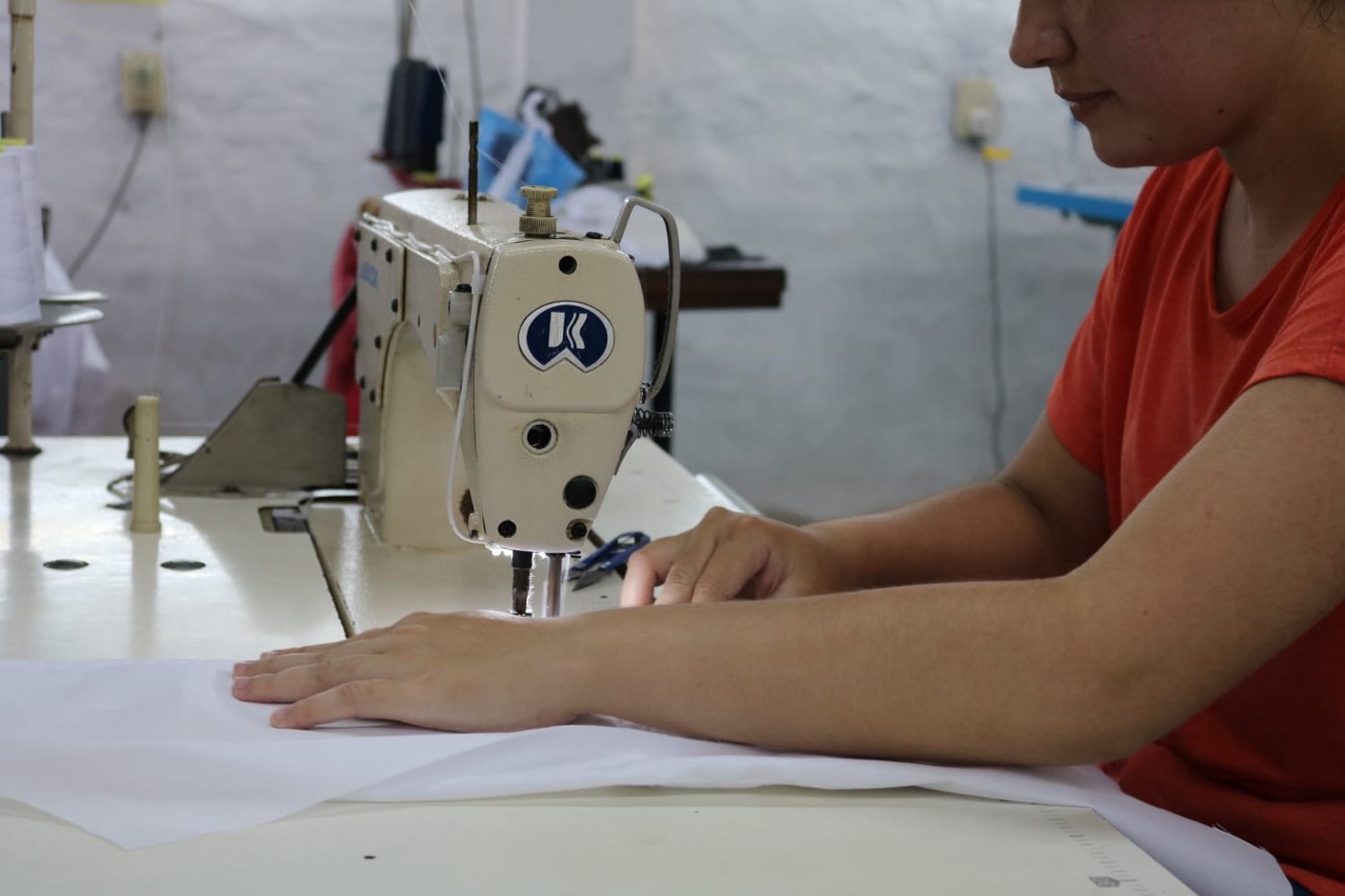
Woman at a workshop in Yaguarón
Yaguarón is a district that hosts a garment cluster with a lot of potential. In the previous blog, we summarized its characteristics and the technological, geographic and knowledge barriers it faces to develop a "flexible manufacturing" system as a strategy for cluster-wide competitiveness. This was the focus of the first phases of the learning loop conducted by the UNDP Accelerator Lab and the National Innovation Strategy (ENI) through the Wendá initiative.
Based on this analysis, the team detected an opportunity to spur learning for product diversification and production flexibility by promoting the production of school smocks in workshops that are almost exclusively dedicated to the production of jeans. For the workshops, incorporating and gaining competitiveness in a new product implies a process of experimentation and learning to optimize time, cost, and quality—a costly and risky process, usually carried out informally by individual workshops.
How can the costs and risks of productive diversification be reduced in order to develop greater flexibility apparel manufacturing clusters?
To answer this question, we designed a prototype of a production management training intervention by developing a context-specific training program for operators and workshop owners based on the optimization of time, cost and quality. Figure 1 illustrates the experimental hypothesis underlying this intervention as a causal chain.
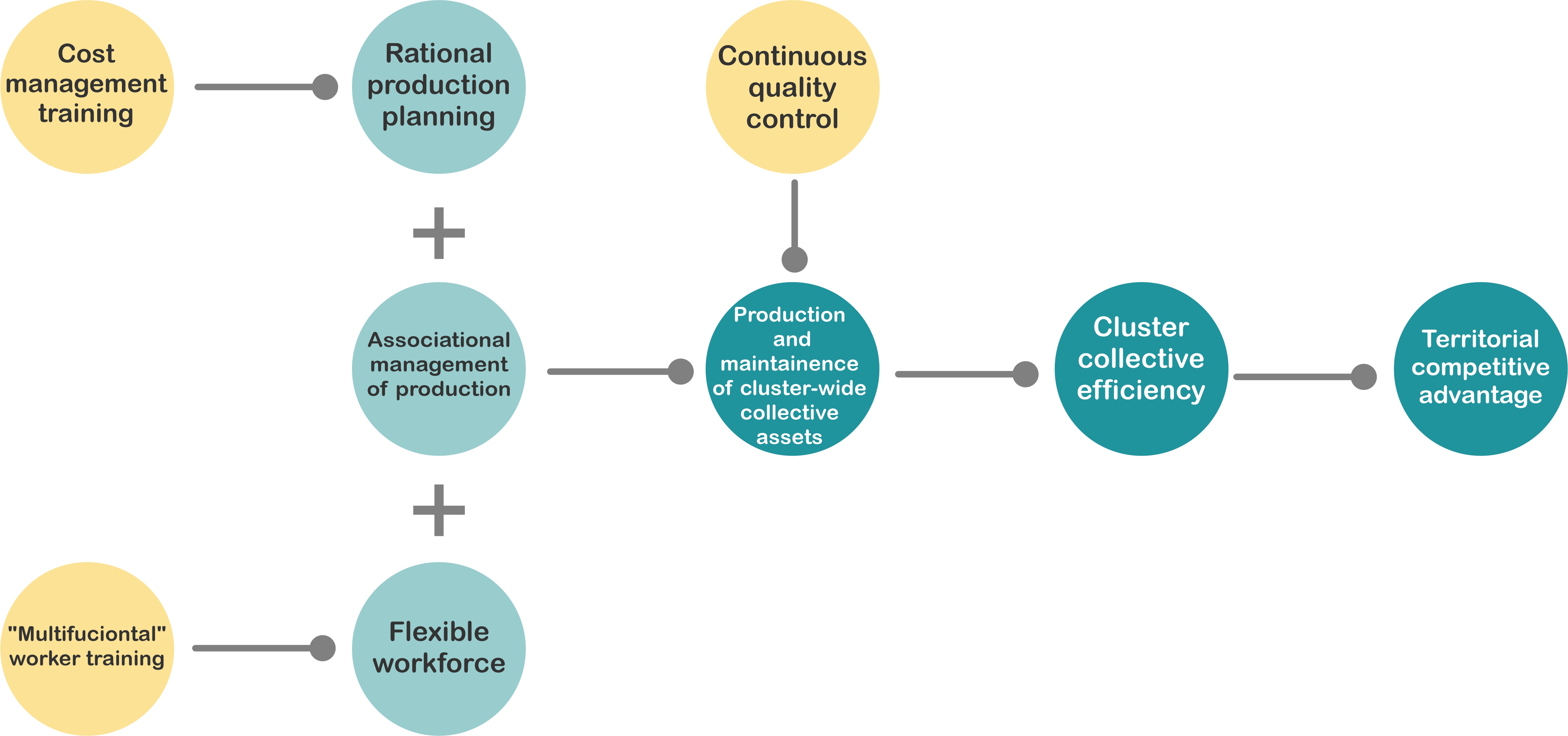
Figure No. 1. Experimental Hypothesis for the Flexible Manufacturing Learning Cycle.
The intervention consisted of three actions:
-
Training managers or owners of workshops in cost measurement with the objective of enabling more rational production planning at the level of individual workshops,
-
Training workers in quality control to contribute to the development of "multi-faceted" or flexible production capabilities (the ability to quickly change functions, tasks or products).
-
The application of "continuous quality control" during the production of school smocks to prevent errors and rejections. Normally, quality control in SMEs is done at the end of the production process, causing high costs due to rejections and reprocessing of products.
In summary, our hypothesis is that these types of training and quality control services have the potential to improve the collective efficiency of the cluster, especially if they were developed in an associative manner, as collective services provided by the garment manufacturers' association to its members.
How was this research developed and studied concretely in the Yaguarón cluster?
The intervention in the territory took place in five stages (see figure No. 2), with the participation of eighteen workshops in the production of school smocks, including members of the Asociación de Confeccionistas de Yaguarón (ACY). In addition, the project built new relationships between government, civil society, and the private sector at both the local and national level.
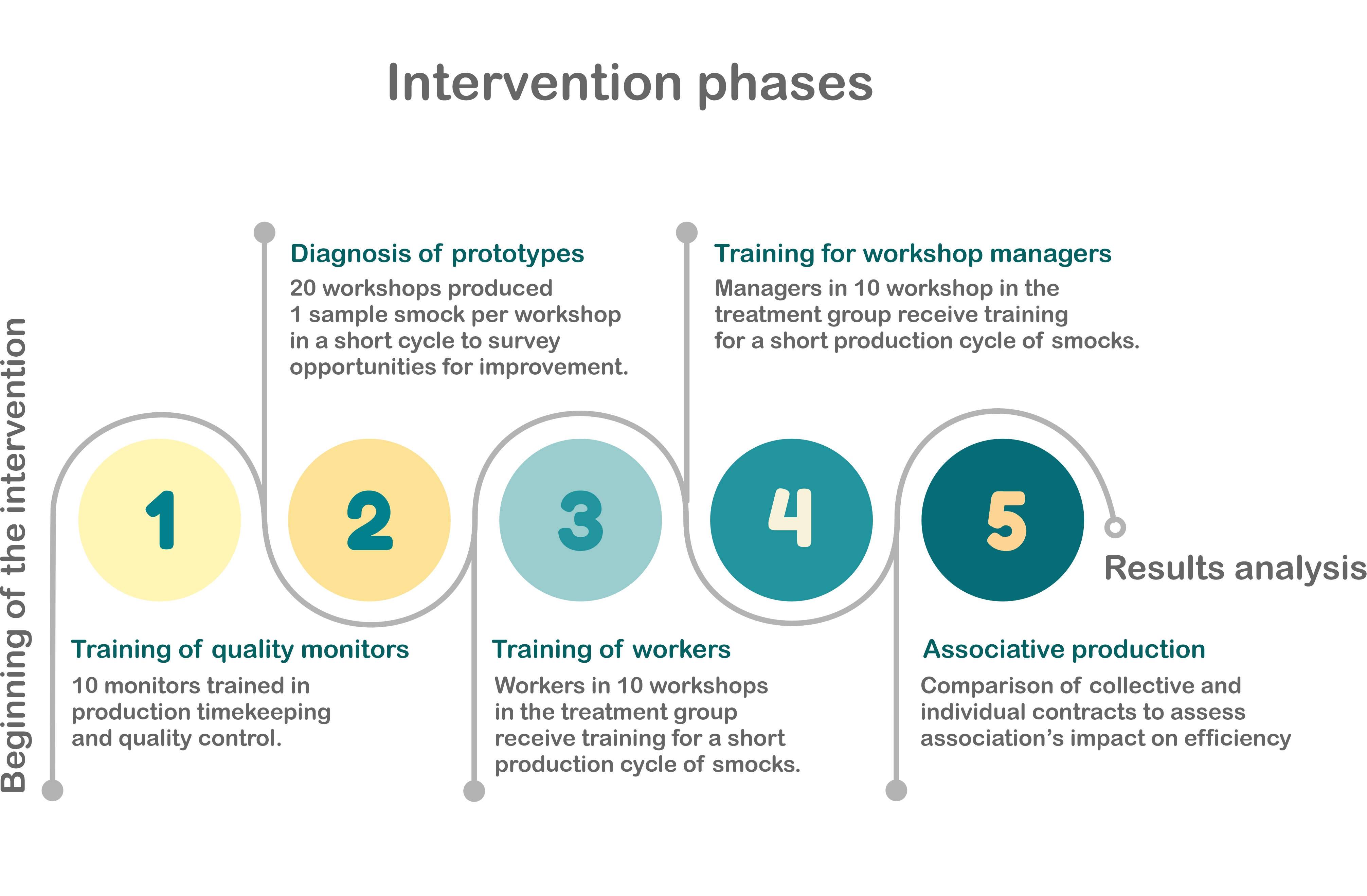
Figure No. 2. Graph of the intervention phases and their main expected results. Prepared by the authors based on the Intervention Plan (September, 2021).
Results
The technical and quality standards were provided by a national apparel brand (Fénix S.A. - Martel), which was in charge of supplying the cuts and inputs, as well as managing the technical and production training for the participating groups.
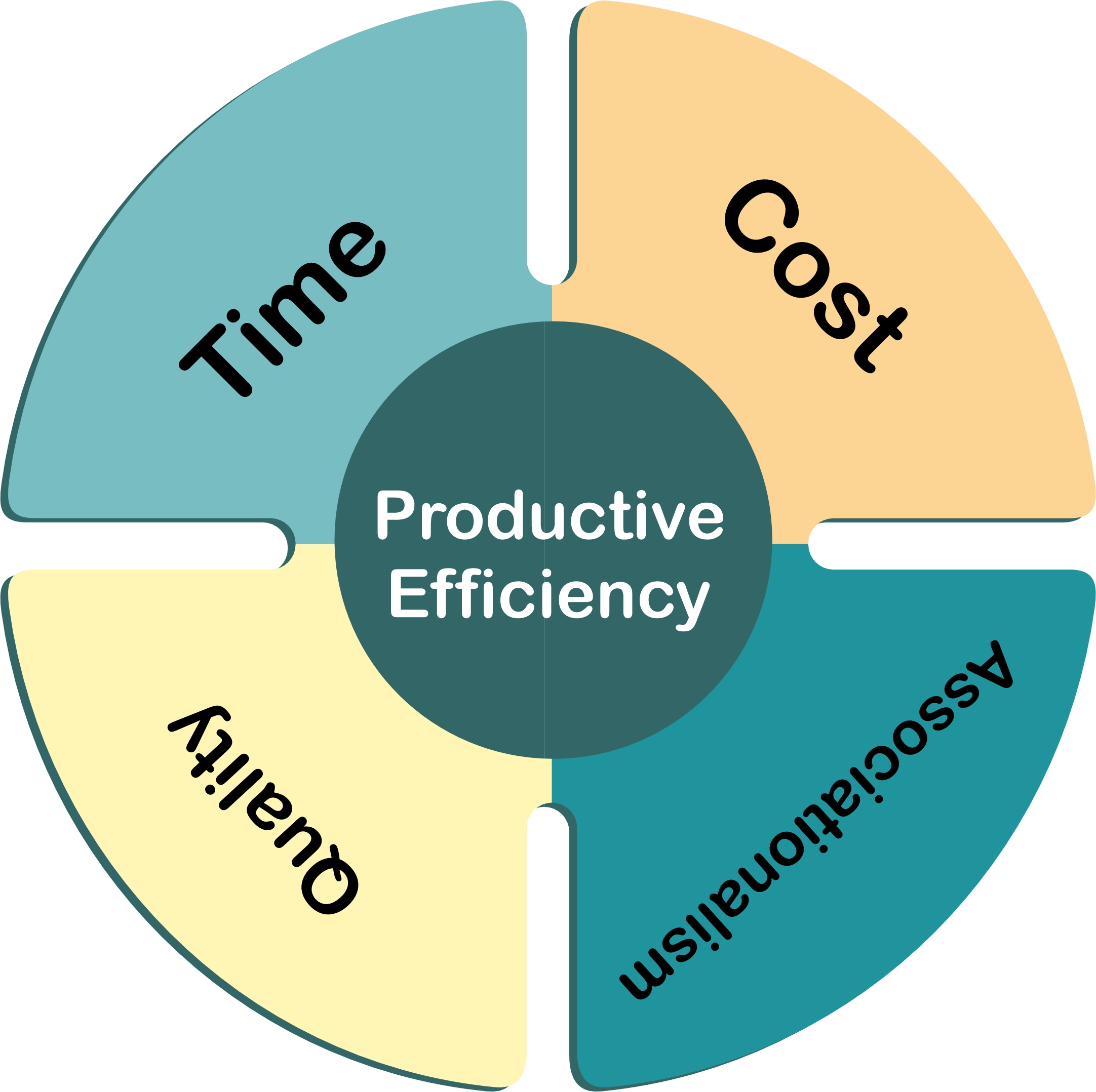
All the collaborations revolved around the need to identify, measure, improve and evaluate the technical capabilities and productive efficiency of the cluster of garment. We approached the entire intervention with an experimental evaluation approach, randomly dividing the workshops into two groups, in order to quantify the impact of the intervention as systematically as possible.
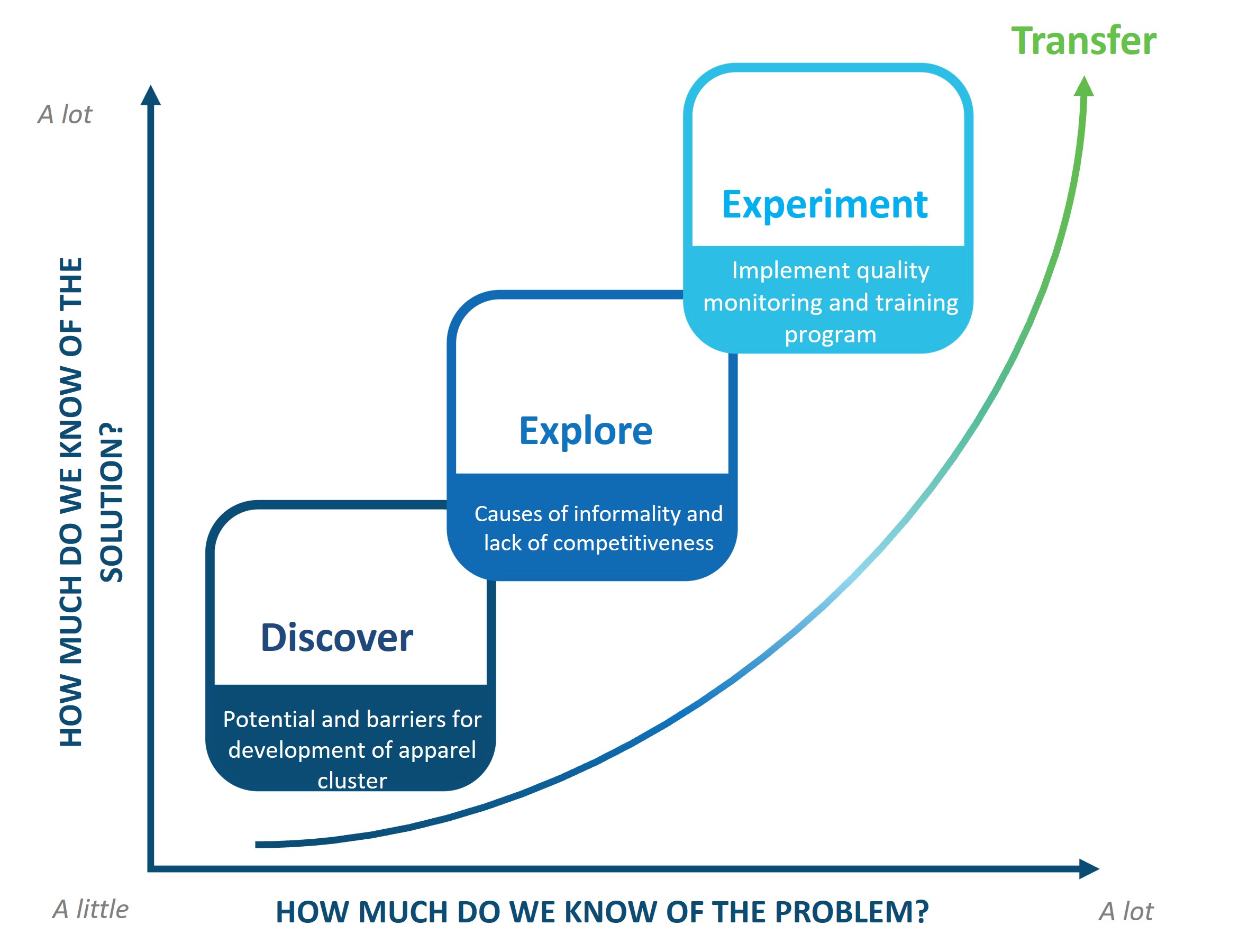
Figure No. 3. Adaptation of the graph of the action research methodology based on the learning loops of the UNDP Acceleration Lab and the ENI.
What are we looking for in the next stages?
The intervention generated a lot of data on the social, labor, and production dynamics related to product diversification. In our third blogpost, we will conclude the learning loop by presenting in detail the impact evaluation methodology we used, the results of the intervention, and the relevant lessons for industrial policies and flexible manufacturing strategies.
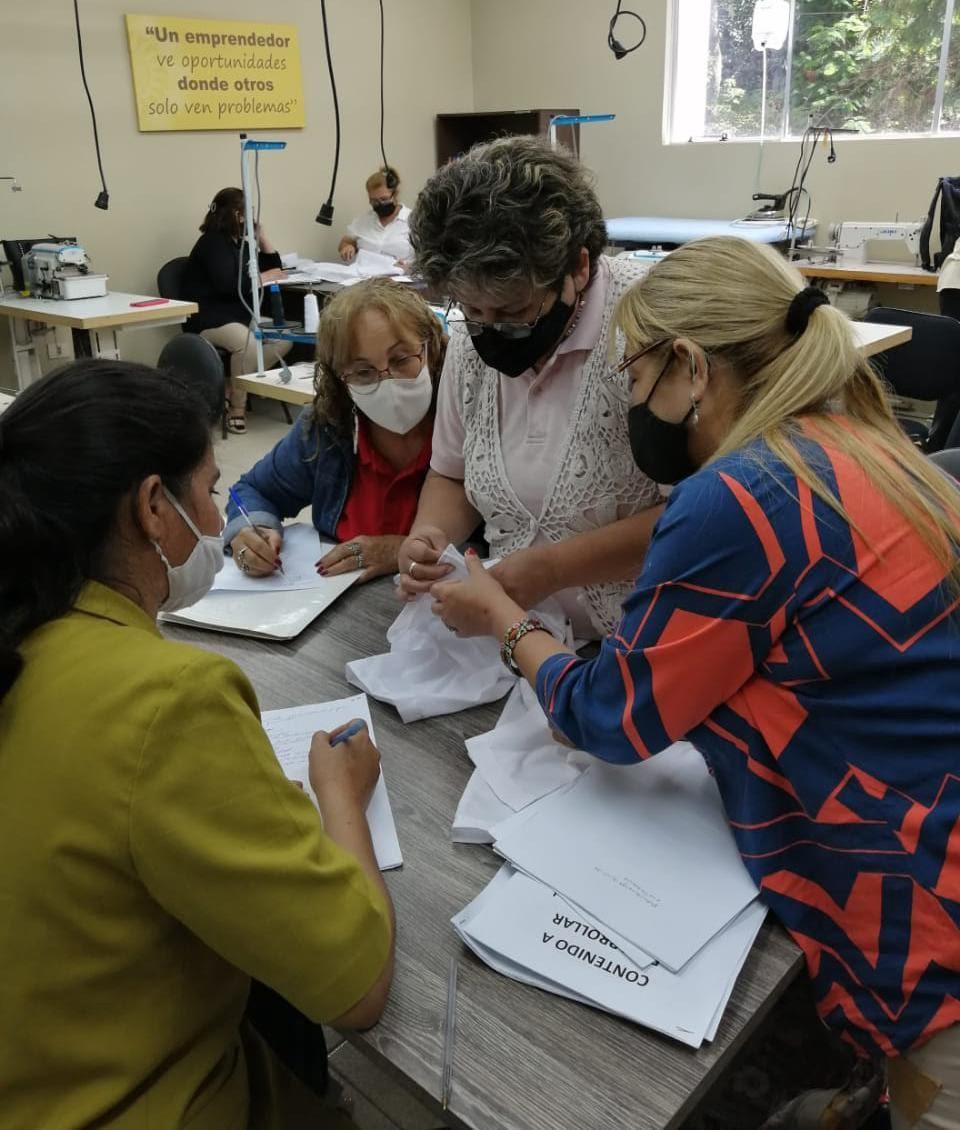
SNPP instructors inspecting the quality of the smocks made during the diagnostic phase in the Yaguarón workshops.
Written by Eva Torales, Carmen Gauto, Ana Lucía Giménez, Jorge Garicoche and the UNDP Paraguay Accelerator Lab team.
-
This blogpost was published on the National Innovation Strategy Paraguay page. To access the original blogpost, click here.
Para leer este blog en español, click aquí.

 Locations
Locations
